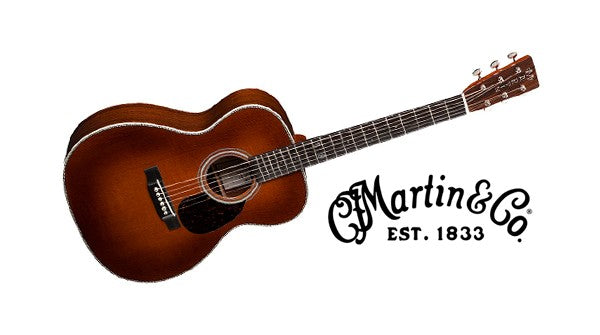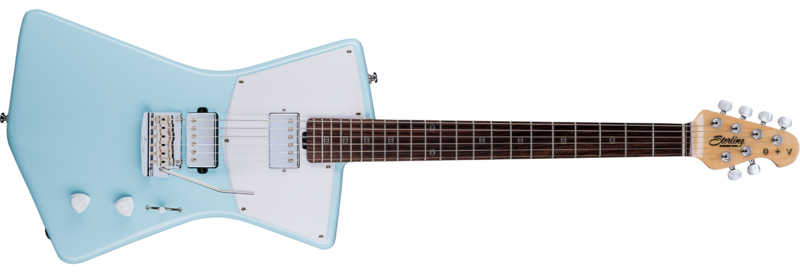Your Cart is Empty
The History and Importance of the Martin 28 Style
July 13, 2021 5 min read

The Martin 28-Style is one of the cornerstones of modern music. Whether you are a strummer, a flat picker, a fingerstyle player, or do a little bit of everything, there are few guitars on the planet that would suit your playing better than a Martin 28-Style model. Whether it’s a 000-28 like Eric Clapton’s signature Martin known for its expressive neck and soulful tone, John Mayer’s OM-28 renown for its versatile sound, or the immortal and iconic D-28, the preferred dreadnought for an array of players from strummers like Hank Williams, Neil Young and Bob Dylan and amazing flat pickers like Johnny Bond and Lester Flatt, there is a Martin 28 that will perfectly suit your musical vision.
Intro to the Martin 28-Style
The Martin 28 Style combines a classic tonewood pairing of a Sitka Spruce top and Rosewood back and sides with a set of appointments that seem humble or even unassuming compared to Martin’s more luxurious models, such as an Ebony fingerboard and bridge, dot inlays, a signature back stripe, and 5/9/5 grouping of soundhole rings. Most of all, 28-Style guitars, like the D-28, 000-28 and OM-28 are known for their high quality, virtually ‘perfect’ construction and their rich and balanced sound.
While it may not be the most decked out Martin, 28-Style Martins are generally regarded as being among the best sounding and easiest playing guitars in history, and have become a staple of the music industry, regardless of musical style. Greats from all across the musical spectrum like Eric Clapton, Johnny Cash, Chris Cornell, Nick Drake, Slim Dusty, Bob Dylan, Ramblin' Jack Elliott, Lester Flatt, John Frusciante, Noel Gallagher, Jerry Garcia, Dick Gaughan, Michael Hedges, Scott Hutchison, Ben Howard, John Lennon, Chris Martin, John Martyn, Paul McCartney, Marcus Mumford, Harry Nilsson, Jimmy Page, and Brad Paisley have all played 28-Style Martins.
The Beginnings of the 28 Style
The magic of the Martin 28-Style, which has captivated artists for generations, hearkens all the way back to the 1870‘s when the first 28-Style models were produced. Featuring a Spruce top with Rosewood back and sides, the first 28-style guitars also sported two distinctive features that have been associated with 28‘s ever since: Herringbone body binding and a zipper-patterned back stripe.
The Herringbone binding was a German product and was no longer available after 1847, so pre-war 28‘s are often called ‘Herringbone’ Martins. From the 1870‘s to the Depression Era, 28‘s were available in size 1, size 5, 0, and 00 size until the first 000-28‘s and OM-28‘s showed up in the mid-to-late 20‘s, the 000-28 first appearing in 1924 and a 14-fret OM-28 first appearing in 1929.
000-28 vs OM-28
For the next 70 years, as the guitar grew in prominence as a musical instrument, Martin 28-Style models naturally became associated with a variety of musical styles including Blues, Country, Bluegrass, Rockabilly, Folk, Rock n’ Roll and modern Alternative and Modern Rock with a rich and nuanced tone that was perfect for a variety of musical styles. 28-Style models have been particularly loved by blues players looking for an acoustic with a rich sound and expressive feel. Players like Clapton and John Mayer both have their own 28-style signature models that capture the essence of the legendary 28‘s that helped build Martin’s reputation.
The OM-28 and 000-28 models were extremely popular and would help pave the way for the 28-Style Martin model that is most often associated with modern acoustic music: the D-28.
The D-28
The Martin D-28 was first introduced in 1931. Most often prized for its ability to combine rich, booming projection with high quality tone. In 1931, the first batch of D-28‘s went completely to the Chicago Musical Instrument Company, but this was an "exclusive" deal that certainly wouldn’t last for long. It wouldn’t be long and this relatively high-end Dreadnought would be one of Martin’s best sellers.
The D-28 was originally built upon the D-14 platform with scalloped X-bracing, and exotic tonewoods, including Sitka or Adirondack Spruce and Brazilian Rosewood (which is no longer available in large quantities due to deforestation and the CITES ban), making original D-28‘s highly prized because they used so many materials that are hard to find today in current production models. The perfect example is the distinctive "herringbone" binding pattern that lined the top of the guitar, which was a luxurious touch that was discontinued in 1946 (though they have recently become available again in the HD-28 where the ‘H’ in the name stands for ‘Herringbone’).
After the war, D28s were so popular that at one point during the 1950s, Martin had a wait time of over two-years to get one! It was the combination of a nuanced yet rich tone, with excellent treble, amazing bass and incredible projection that made D-28‘s so prized by musicians around the world.
From the war years until today the D-28 has been the main guitar for strummers and pickers in Country, Bluegrass, Rockabilly and all kinds of Rock performers including Jimmy Page, Brad Paisley, Bob Dylan, John Frusciante and Noel Gallagher just to name a few.
2017: Reimagining 28‘s

Martin OM-28
The D-28 and the rest of the 28-Style models, including the 000-28 and OM-28, had remained basically the same with very small variations from the Postwar years all the way into the new millennium. The Standard Series had remained largely unchanged since the late 1940‘s, so by 2017 Martin decided to update their flagship line of instruments with ‘an even higher standard of tone, look, and playability.’
Martin D-28 Reimagined
With the 2017 reimagining, Standard Series 28-Style instruments were redesigned with the new low oval neck shape and the high performance neck taper. If there was any complaint about Prewar and Postwar vintage Martins, it would be the girth of the neck. With the new low oval neck shape and high performance neck taper, all of the old 28‘s retain their classic tone, but with modern feel and playability.
Another feature of the reimagined Standard Series guitars is a new bracing pattern. The traditional X-bracing that Martins have sported for decades, if not centuries, was refined in favor of a forward-shifted X-bracing pattern. With scalloped, forward shifted X-bracing, the bracing is shifted forward closer to the sound hole, leaving the top free to move and respond to your playing. This gives you a louder and more responsive instrument.
With these modern enhancements, the Standard Series Flagship 28 Models from Martin are as good and perhaps even better than ever in some respects! Combining modern playability with that vintage Martin tone and build quality, the reimagined 28-Style models promise to carry the Martin pedigree into a new century.
Leave a comment
Comments will be approved before showing up.
Also in Adirondack Guitar News and Blog
Browse Our Store
Recent Articles
- Left Handed Guitarists Who Learned to Play Right Handed July 13, 2021
- The History and Importance of the Martin 28 Style July 13, 2021
- Adirondack Guitar Profiles: St. Vincent July 13, 2021
- Adirondack Guitar Profiles: John Petrucci May 05, 2021
- How to Turn Your Music Skills into a Career March 30, 2021



